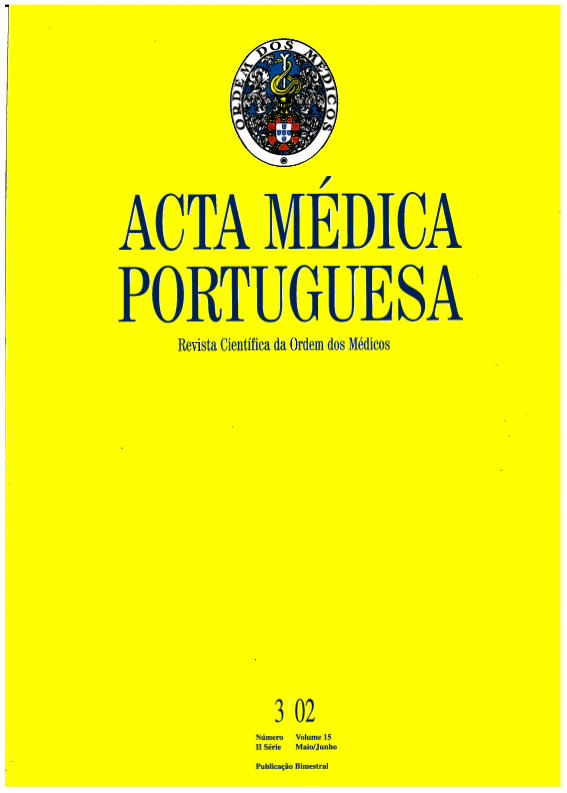Prevalence of iron-deficiency anemia according to infant nutrition regime.
DOI:
https://doi.org/10.20344/amp.1928Abstract
Iron deficiency is the world most prevalent nutritional disorder.To determine the prevalence of iron deficiency anemia in a population of infants with nine months of age, and the variation of this prevalence according to infants feeding regimes.One hundred eighty eight infants with nine months of age were studied for anthropometry, socio-economic factors and feeding regime. Blood samples were taken for blood cell counts, serum ferritin, iron and transferrin. Infants were labelled anaemic if haemoglobin level was less than 110 g/L and with iron deficiency anaemia if, in addition, they had a ferritin value of less than 12 g/L.The mean (standard deviation) values for haemoglobin were 111.8 g/L (9.1 g/L). Seventy-nine infants (42%) were anaemic. The prevalence of iron deficiency anaemia was 20%. Infants with iron deficiency anaemia were fed with iron fortified formula for 2.3 months in average in contrast with 3.8 months of those without iron deficiency anaemia (.005). Cereals fortified with iron were introduced in the nourishment of infants with iron deficiency anaemia at 4.3 months in average in contrast with 3.9 months among those without it (.009). The infants with iron deficiency anaemia were breast fed for 4.8 months in average in contrast with 3.7 months among those without it (.079). Age of the introduction of cow's milk, social class and Graffar, vitamin C supplementation and anthropometric parameters were not significantly associated with iron deficiency anaemia.This study points information about which groups are more at risk of developing iron deficiency anaemia in infants but when this evidence is only based in feeding practices one can not completely separate infants with and without iron deficiency anaemia; therefore a universal screening seems an indispensable tool for identification of iron deficiency anaemia.Downloads
Downloads
How to Cite
Issue
Section
License
All the articles published in the AMP are open access and comply with the requirements of funding agencies or academic institutions. The AMP is governed by the terms of the Creative Commons ‘Attribution – Non-Commercial Use - (CC-BY-NC)’ license, regarding the use by third parties.
It is the author’s responsibility to obtain approval for the reproduction of figures, tables, etc. from other publications.
Upon acceptance of an article for publication, the authors will be asked to complete the ICMJE “Copyright Liability and Copyright Sharing Statement “(http://www.actamedicaportuguesa.com/info/AMP-NormasPublicacao.pdf) and the “Declaration of Potential Conflicts of Interest” (http:// www.icmje.org/conflicts-of-interest). An e-mail will be sent to the corresponding author to acknowledge receipt of the manuscript.
After publication, the authors are authorised to make their articles available in repositories of their institutions of origin, as long as they always mention where they were published and according to the Creative Commons license.









